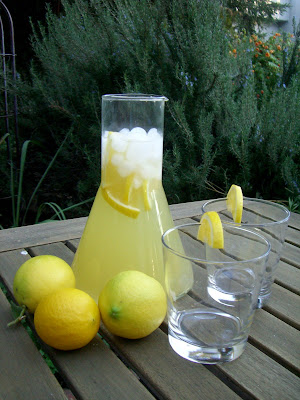Rain, rain, don't go away until I've finished my beef stew.
Don't get me wrong. I love to cook, but there's one thing I love even more: when someone else cooks for me.
I've never met a home-cooked meal I didn't like. Well . . . except for an unforgettably tragic beef stew.
A new friend once invited my husband and me to her apartment for dinner. I was excited when I found out she was making beef stew, one of my favorite cold-weather comfort foods.
She ladled steaming hot stew into bowls for her three guests. I'm sure my face fell when I peeked into my bowl. The beef was charred black, but the potatoes and carrots were raw. The liquid was a starchy, tasteless goop the color and texture of wallpaper paste.
We all tried to eat it. We really did. After five minutes of pushing around the undercooked/overcooked chunks in hopes that they would magically disappear, the cook dropped her spoon. "I'm sorry. I can't eat this."
At first, we protested, "No, really, it's fine. I like my veggies crunchy." And then her boyfriend spoke up. "Are you kidding? This isn't edible." He was right (even though he wasn't "Mr. Right.") Instead, we spent the evening munching on Saltine crackers and sipping the fine cabernet that boyfriend brought. You can never go wrong with cab and regret.
I think of that evening every time I make beef stew (or whenever I make a meal that's borderline inedible).
Who knows how things would have come out (on both the culinary and romantic fronts) if only Kathy had followed this recipe from Pam at For the Love of Cooking. (Do click and see Pam's version. Why does hers look so much richer than mine?)
Can't Fail Beef Stew
(Adapted from For the Love of Cooking)
1 lb beef, cut into small chunks
1 yellow onion, chopped into large chunks
4 medium-size Russet potatoes, diced
4-5 carrots, sliced
6 cloves of garlic, chopped
1 T. olive oil
1 14 oz. can diced tomatoes
1-2 tsp dried thyme (or 2 T. fresh)
1-2 tsp dried oregano
Salt and pepper to taste
2 bay leaves
6 cups beef stock (or any combination of at least 3 cups of beef stock and enough wine or dark beer to make 6 cups)
One of the things that I like about this recipe is that it has a large margin for alterations (and error). Like celery? Go ahead and add it. Prefer red potatoes? Go for 'em. Don't like garlic? Leave it out. Love peas? Throw them in at the last minute. Don't have fresh thyme? Use dried. Don't like your meat falling apart? Cook for four or five hours instead of seven or eight.
I used my enamel-cast iron pot and cooked the beef and broth mixture overnight, but you can also do this on a stove top or in the crock pot. Allow at least four hours for cooking the meat and an additional 1 1/2 hours for the vegetables. After all, a good beef stew can't be rushed.
- Preheat oven to 250 degrees.
- Heat olive oil and cook onion and stew meat for about 5 minutes.
- Add garlic and cook for another 30 seconds.
- Add can of tomatoes, seasonings and beef stock.
- Cover and cook in oven or stove top for at least four hours.
- Remove pot from oven place on stove top over medium heat.
- Add potatoes and carrots (and celery, if you like that in your stew) and cook for an additional 1 1/2 to 2 hours.
- If you like the broth thicker, add a slurry of corn starch and water.
Serve with a crusty bread and a bottle of red wine, preferably on a rainy day in front of the fire.
May I eat mine by the fire, please?



























